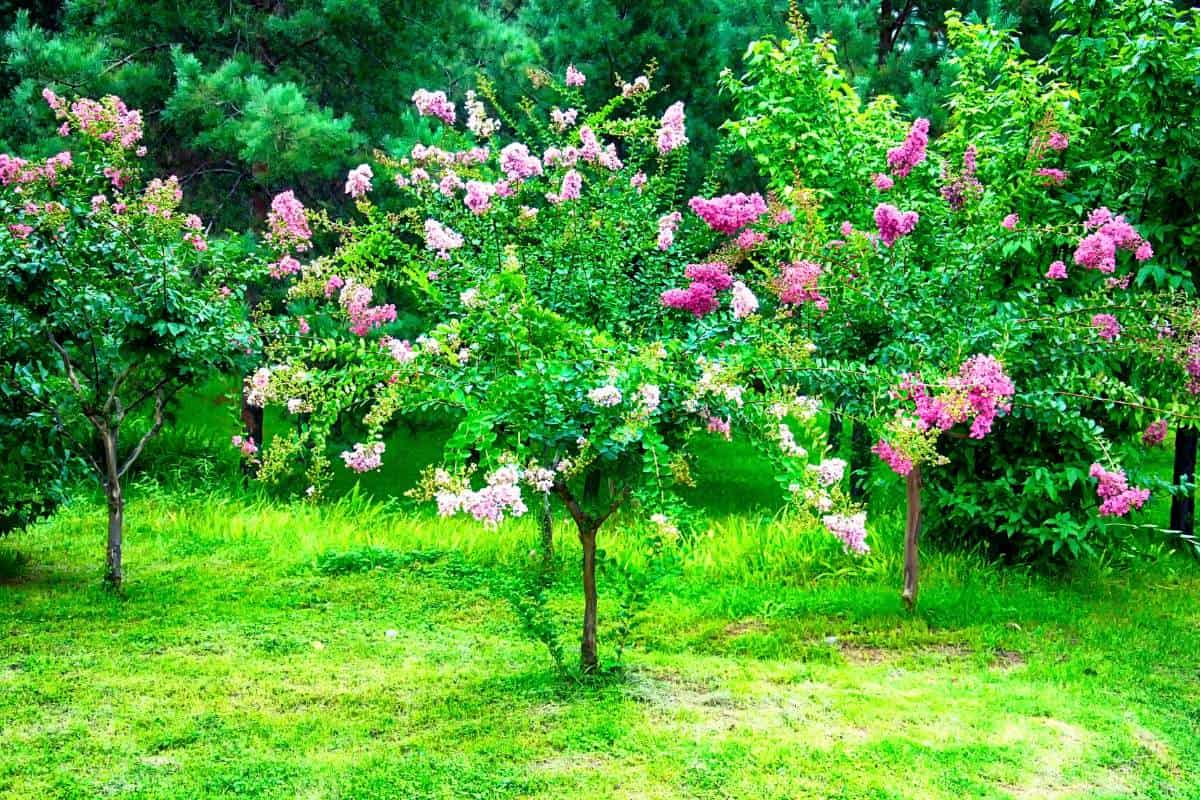Not everyone has the opportunity to landscape a large yard with no space requirements. Having a premium on space doesn’t mean you have to sacrifice your desire for trees! There are some species of shrubs that can be pruned into a treelike shape.
Such shrubs come in many varieties: flowering, evergreen, deciduous, or fruiting. There are different ways you can prune shrubs as well. They can be pruned into a traditional tree shape, which is one trunk with branches, or they can be pruned into decorative and ornamental shapes.
Shrubs pruned like trees can have multiple trunks, canopies, and branches. Keep reading this article to learn more about some of the shrubs you can prune into the shapes of trees!
8 Shrubs that Can Be Pruned into Small Trees
1. Crepe Myrtle
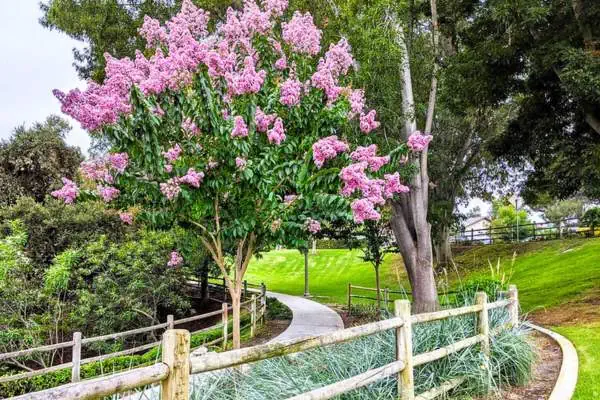
- Scientific name: Lagerstroemia sp.
- Growth zones: 7 to 10
- Sun Level: Full sun
Crepe myrtles are some of the most popular ornamental shrubs in the United States. They’re a common sight throughout the eastern United States in suburban areas. Urban planners like them because they grow fast, bloom in bright colors (white, pink, red, and purple), have attractive peeling bark, and can be planted along street corners and sidewalks.
When left alone, they can grow over 100 feet tall. However, most are small or medium. Most ornamental plants rarely grow over 15 to 20 feet tall. You can buy a plant with one or multiple stems at the garden center.
To train it to be a tree, purchase a single-stemmed plant. Prune it over time so that the node from which the branches grow is higher up on the trunk.
2. Wisteria
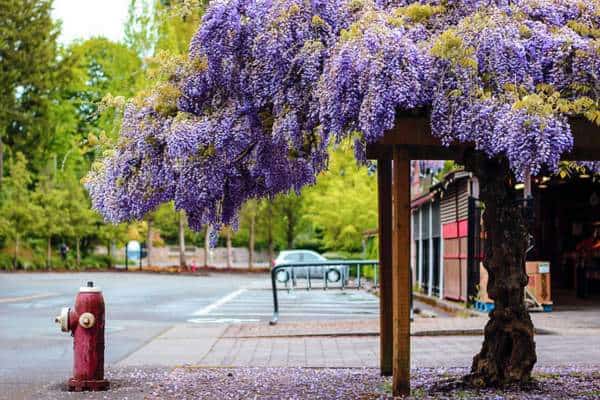
- Scientific name: Wisteria sp.
- Growth zones: 5 to 9
- Sun Level: Full sun
Wisteria is naturally a shrublike vine that grows around existing trees and ground features. With some effort, it can be trained into a treelike habit. They require external support while growing and throughout their lifetime, so it’s not as independent of a tree as other shrubs on this list.
Wisteria can be trained to grow in a canopy around a single central trunk with careful and regular pruning. It has been known to collapse support structures, so it’s crucial to ensure that the scaffold or arbor you are growing it on is sturdy.
They can live for hundreds of years, and they often take over an area as large as 33 feet when wild because of their habit of covering the ground. They’re a great addition to your yard because of their light purple flowers and their sweet floral scent.
3. Roses
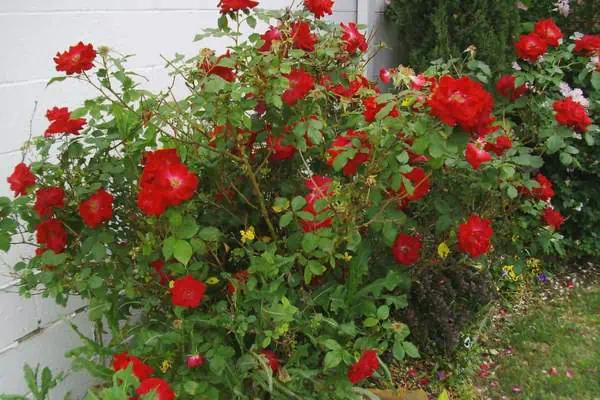
- Scientific name: Wisteria sp.
- Growth zones: 4 to 9
- Sun Level: Full sun
Roses are traditionally grown as shrubs, although you can prune them into tree shapes if you desire. To do so, you’ll need to start with a preexisting rosebush or a rosebush that has been grafted onto a central leader stalk. The latter won’t need much pruning to stay in a tree shape, but the non-grafted rose bush will.
Here’s how:
- Look for a rosebush with a strong and sturdy central branch. This will become the “trunk” of the rose tree.
- Trim off all foliage in the middle and base of the bush.
- Trim off the top of the central branch so that new branches will grow outward in a canopy.
- Stake the rose tree after planting so it will grow straight.
Remember that a rose tree is still a shrub, and a delicate one at that. It probably won’t grow too large and it needs to be pruned regularly. You can still maintain regular pruning habits despite its new shape.
4. Panicle Hydrangea
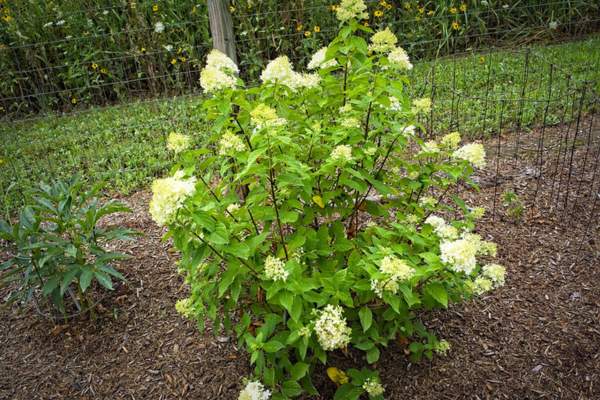
- Scientific name: Hydrangea paniculata
- Growth zones: 3 to 8
- Sun Level: Full sun to part shade
In the southeastern United States, hydrangeas are often a common sight in suburban yards. They can live for over a hundred years and grow to be over 20 feet tall. They naturally take a shrublike form, but with some careful pruning, you can get your hydrangea to grow in the shape of a tree.
The panicle hydrangea is the best for pruning this way because it grows upright in a treelike way. After establishing your hydrangea, prune it regularly according to general guidance, but prune out the base so that it has just one trunk. Keep the interior sparse and allow for most of the leafing to happen on the upper surface.
Hydrangeas prefer moist soil with high organic matter. This species’ flowers are white, but hydrangeas can have flowers ranging from periwinkle to pink depending on the acidity of the soil. The more acid, the more pink the flowers.
5. Red Twig Dogwood
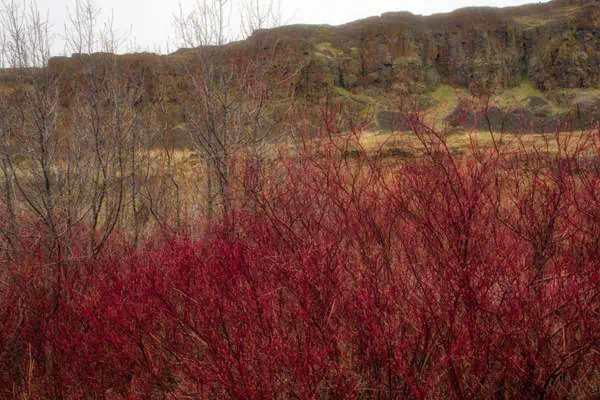
- Scientific name: Cornus sp.
- Growth zones: 3 to 8
- Sun Level: Full sun to part shade
Red twig dogwood is one of the most beautiful sights in the winter months, but it’s not a tree for the faint of heart. This variety of dogwood naturally grows as a shrub, not a tree. That doesn’t mean it’s impossible to change its shape though!
The plant’s tendency to grow suckers – shoots from the ground – can make it a headache to continually prune and cut back. They even grow up to 2 feet per year. This is a good treelike shrub for you if you’re in a low-lying area like a floodplain or a river’s edge prone to erosion.
They also add visual interest to your yard if you want a pop of color in the cloudy, cold days of winter.
6. Cotoneaster
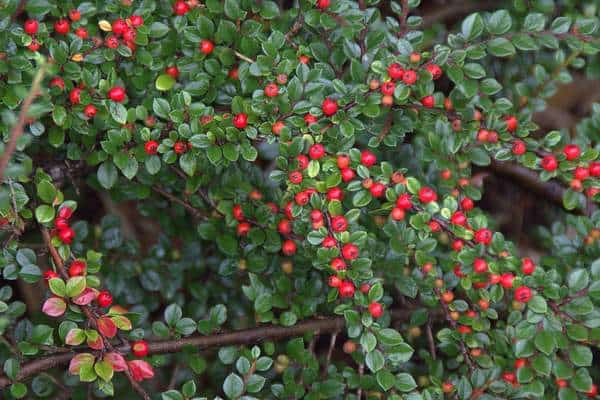
- Scientific name: Cotoneaster horizontalis
- Growth zones: 5 to 7
- Sun Level: Full sun to part shade
The cotoneaster is popular in the United Kingdom as well as North America. They originated in the Himalayas but have since spread across continents and cultures to be a well-known ornamental plant. This shrub is great for bonsai planting, back gardens, front yards, and decor.
Their branches are pliable so many people have historically made wreaths for holidays. They do best in climates with clear divisions between seasons. Like rose trees, cotoneaster trees are typically made by grafting a root stock to a cotoneaster plant.
This lowers the amount of work for the gardener because they don’t have to word about removing suckers or training the tree to grow vertically. It’s not impossible to train a single plant into the shape of a tree, though.
7. Texas Sage
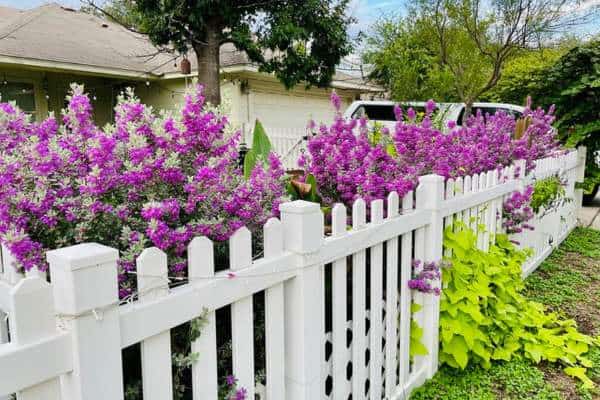
- Scientific name: Leucophyllum frutescens
- Growth zones: 8 to 11
- Sun Level: Full sun to part sun
Texas sage is a hardy and fast-growing shrub native to the southwestern United States. It’s a great addition to any backyard garden because of its pleasant herbal scent and light pink flowers. The silvery-green appeal of its leaves set it apart from other plants in the region.
This plant normally exists as a shrub, but it can be pruned into the shape of a small tree. The process is similar to that of pruning a rose bush. Identify a shrub with a strong central leader.
Prune away all vegetation from the base upwards until you’ve reached the point where you’d like the canopy to start. Lop off the top of the central leader – that will encourage the tree to grow outwards.
8. Sea Grape
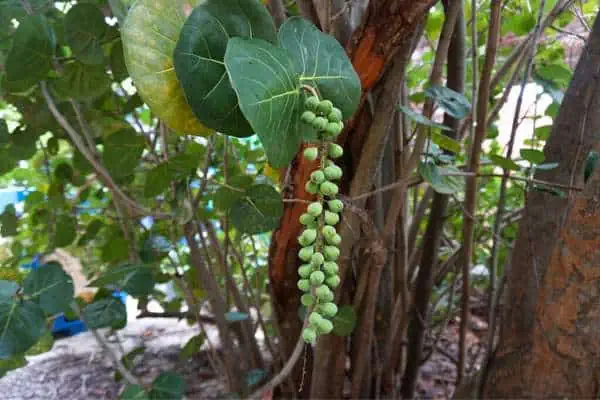
- Scientific name: Coccoloba uvifera
- Growth zones: 10 to 11
- Sun Level: Full sun
Rejoice, warm-climate inhabitants! Sea Grape is a great treelike shrub that you can grow in your backyard. It thrives along the coasts and dunes of Florida and some of the surrounding areas.
They are very frost sensitive, so if you’re worried about that, plant it in a container and bring it inside during cold snaps. Sea grapes are great to grow in your backyard if you live in this area.
It’s great for you – you get to see its interesting twisted trunk and eat the delicious ‘grapes’ – and great for the environment, since sea grapes are a native species. Just remember that pruning should always be done by hand.
